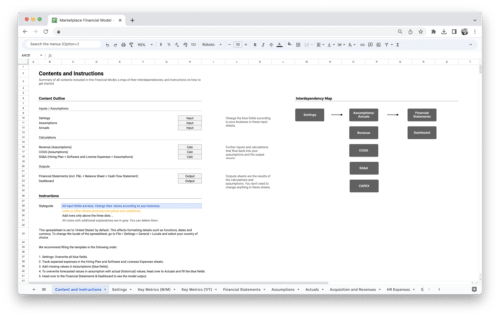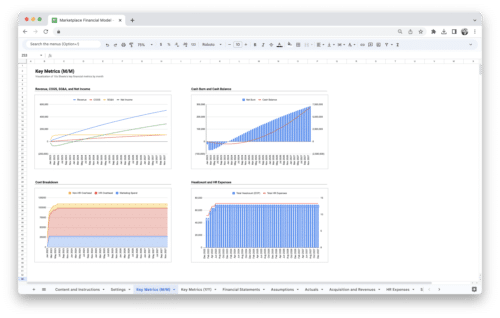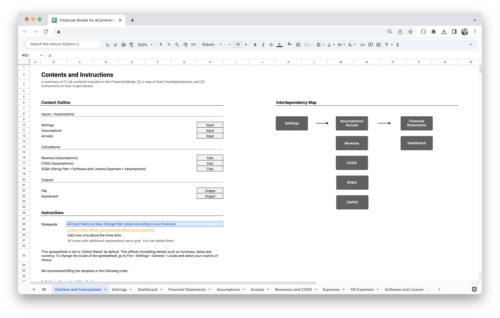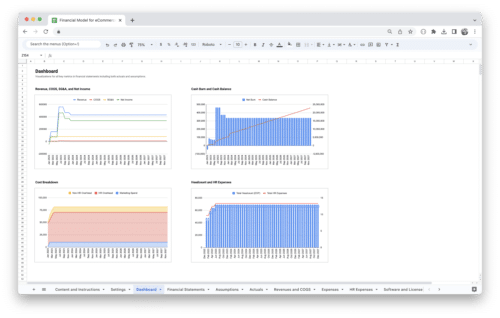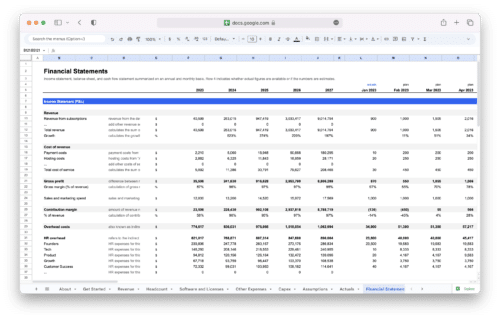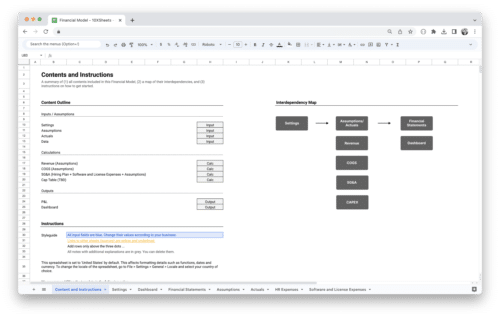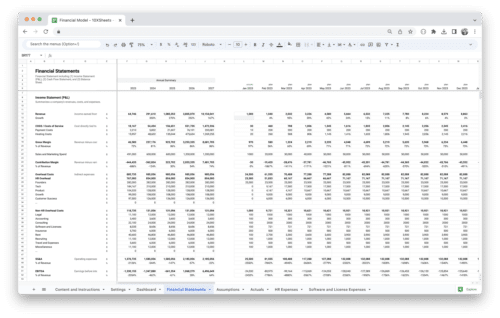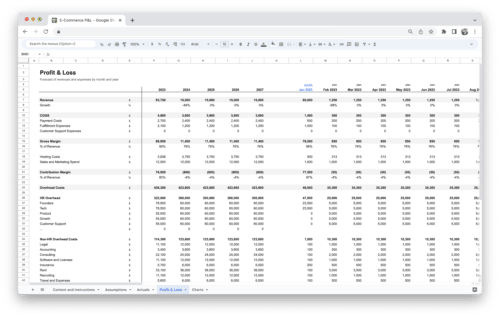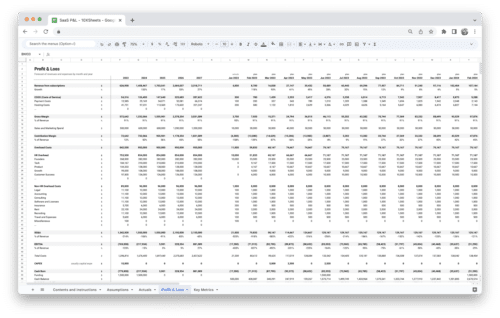
- What are Retained Earnings?
- How to Calculate Retained Earnings?
- Retained Earnings Examples
- The Significance of Retained Earnings for a Business
- Retained Earnings and Financial Health
- The Role of Retained Earnings in Corporate Decisions
- Retained Earnings and Stockholders’ Equity
- Retained Earnings Pitfalls and Misunderstandings
- Retained Earnings and Tax Considerations
- Best Practices for Managing Retained Earnings
- Conclusion
Have you ever wondered what happens to the profits a company makes after paying its bills and rewarding its shareholders? The answer is simple: those profits often become retained earnings. Retained earnings are the money a company keeps instead of paying out as dividends, and it plays a big role in helping the business grow and succeed. Whether it’s used for expanding operations, investing in new projects, or paying off debt, retained earnings provide the financial fuel companies need to move forward.
In this guide, we’ll break down everything you need to know about retained earnings—why they matter, how they’re calculated, and how they affect a company’s financial health. Whether you’re an investor, a business owner, or just curious, this guide will give you a clear, easy-to-understand look at the role retained earnings play in the world of finance.
What are Retained Earnings?
Retained earnings refer to the cumulative net income of a company that has been retained or reinvested in the business rather than distributed to shareholders as dividends. Essentially, these earnings are the portion of profit a company keeps in-house, using it to fund operations, pay off debts, or finance growth initiatives. Over time, as a company continues to earn profits and retains a portion of them, its retained earnings grow, providing a valuable source of internal capital.
For example, if a company generates a net income of $100,000 in a year and pays out $30,000 in dividends, the remaining $70,000 becomes part of the retained earnings. This retained profit can be reinvested into the business in various ways, such as expanding operations, upgrading technology, or increasing working capital to improve liquidity.
The balance of retained earnings is reported in the equity section of the company’s balance sheet. The concept is vital because it shows how much profit a company has retained to reinvest and how it is utilizing its earnings to fuel future growth or meet financial obligations. While this accumulation of profits is key to long-term sustainability, businesses must balance their retained earnings strategy with the need to provide returns to shareholders, either through dividends or share price appreciation.
Importance of Retained Earnings in Financial Accounting
Retained earnings play a crucial role in a company’s overall financial structure and performance. They are not just a reflection of profits but also an essential tool for financial growth, decision-making, and stability. Here’s why retained earnings matter in financial accounting:
- They indicate a company’s ability to generate and retain profits: A steady increase in retained earnings signals that the company is effectively managing its resources and reinvesting profits for future growth. This accumulation of earnings reflects a company’s consistent profitability and ability to fund operations without relying heavily on external debt.
- They represent reinvestment for growth: Retained earnings are a primary source of internal financing for businesses looking to expand, acquire new assets, or fund research and development initiatives. By reinvesting profits, businesses can scale operations and improve competitiveness in the market.
- They contribute to financial stability: Retained earnings provide a cushion that helps businesses manage economic downturns or unexpected expenses. In times of low revenue or financial hardship, the company can tap into its retained earnings, reducing the need for borrowing and keeping the business afloat without taking on new debt.
- They influence shareholder decisions: Retained earnings can impact shareholder perceptions of the company’s financial health. A company that consistently accumulates retained earnings is seen as stable, which can help attract long-term investors. However, failure to manage retained earnings effectively might lead to shareholder dissatisfaction if dividends are low or profits are not reinvested wisely.
Overview of Retained Earnings in a Company’s Financial Statements
Retained earnings are prominently featured in a company’s financial statements, primarily within the balance sheet and the statement of retained earnings. These earnings reflect the cumulative profits that have been reinvested into the business rather than paid out to shareholders. Understanding how retained earnings appear in financial statements is key to interpreting a company’s financial health and growth prospects.
On the balance sheet, retained earnings are listed under the equity section, which also includes other components such as common stock, preferred stock, and additional paid-in capital. Retained earnings are updated each period, adding the current period’s net income (or subtracting any net loss) and accounting for dividends that have been paid out to shareholders. This section shows how much of the company’s capital has been retained within the business, contributing to its overall financial strength.
Additionally, the statement of retained earnings outlines the changes in retained earnings over a specific period. This statement provides a detailed view of how retained earnings have evolved, starting with the balance at the beginning of the period, adding the net income, and subtracting any dividends or other adjustments. By analyzing this statement, stakeholders can assess whether the company is effectively using its profits for growth or is facing challenges that may affect its ability to retain earnings.
In summary, retained earnings are an important figure in financial accounting that reflects how well a company is managing its profits. They provide insight into a company’s financial stability, growth potential, and ability to generate value for shareholders. By carefully tracking retained earnings over time, both investors and company leaders can make more informed decisions about future strategies and business performance.
How to Calculate Retained Earnings?
Understanding how retained earnings are calculated is essential for any business owner or investor. This calculation is rooted in basic accounting principles and reflects a company’s ability to reinvest profits rather than distributing them to shareholders. To put it simply, retained earnings represent the cumulative amount of profit that has been kept in the business, minus any dividends that have been paid out.
Retained Earnings Formula
The formula to calculate retained earnings is quite simple:
Retained Earnings (End of Period) = Retained Earnings (Beginning of Period) + Net Income – Dividends
The calculation starts with the retained earnings at the beginning of the period, which is usually the closing balance of the previous financial period. From there, you add the net income earned during the current period, which reflects the company’s profitability. Finally, you subtract any dividends that were paid out to shareholders during that period.
For example, if your company had $100,000 in retained earnings at the start of the year, earned a net income of $30,000, and paid $5,000 in dividends, your retained earnings at the end of the year would be:
$100,000 + $30,000 – $5,000 = $125,000
This resulting amount is the company’s retained earnings at the end of the period, which is reported on the balance sheet.
The Role of Net Income and Dividends
Net income and dividends are two key factors that directly influence retained earnings. Net income, which is the company’s total earnings after expenses and taxes, reflects the company’s overall profitability for the period. This is the amount from which retained earnings are derived, and it plays a crucial role in determining whether the company is accumulating profits or facing losses.
When your business earns a net income, you have the option to either reinvest that money back into the company or distribute a portion of it to your shareholders as dividends. If you decide to reinvest the profits, they get added to the retained earnings. This can be used for funding expansion, investing in new projects, or paying off any debts.
On the other hand, if you decide to pay dividends to shareholders, that amount is subtracted from the retained earnings. Dividends are a way of rewarding shareholders for their investment in the company, but they reduce the amount of capital available for reinvestment. A company that consistently pays out dividends might not accumulate as much retained earnings, which can affect its ability to fund future growth or weather financial downturns.
The balance between net income and dividends is a crucial decision for business owners and financial managers, as it impacts both the company’s financial health and shareholder satisfaction.
Retained Earnings and the Balance Sheet
Retained earnings appear under shareholders’ equity on the balance sheet, and they are a key indicator of a company’s long-term financial health. The balance sheet is divided into two main sections: assets and liabilities. The difference between the two is the equity, which includes retained earnings.
In the equity section, retained earnings are displayed as the cumulative total of profits kept in the business over time. This is important because retained earnings are not only an indicator of past profitability, but they also show how well a company is managing its finances for future growth. A positive and growing balance of retained earnings indicates a well-managed company that has successfully turned profits into future potential. Conversely, if retained earnings are low or negative, it could suggest that the company has been struggling to maintain profitability or has been overly reliant on debt or external financing.
When examining the balance sheet, you can see the effect of retained earnings on your company’s financial stability. For instance, if you retain more earnings, your equity grows, which strengthens your company’s position in the eyes of investors, creditors, and other stakeholders. This increased equity can help you secure better financing terms, fund new projects, or expand operations without having to rely heavily on external debt.
In summary, retained earnings are an essential part of your company’s financial foundation. They provide insight into profitability, decisions about dividends, and the overall financial health and growth prospects of the business. The balance sheet offers a snapshot of these earnings and can help guide strategic business decisions.
Retained Earnings Examples
Understanding how retained earnings work in real-life business scenarios can help clarify their importance. Here, we’ll explore a few examples to show how companies use retained earnings for various purposes, such as growth, debt repayment, and shareholder rewards.
Example 1: A Tech Startup Using Retained Earnings for Growth
Imagine a tech startup that has been growing rapidly. Over the course of the year, the company generates a net income of $500,000. The management team decides not to pay dividends to shareholders and instead retains all of the earnings to fund the development of a new product line. This decision is based on the belief that the new product will generate significant revenue in the following years, positioning the company for even more growth.
Here’s how the retained earnings play out in this scenario:
- Net Income: $500,000
- Dividends Paid: $0 (all earnings are retained)
- Retained Earnings: $500,000
By choosing to reinvest all the profits, the company avoids borrowing money or diluting ownership by issuing new shares. The retained earnings are used to fund R&D, marketing efforts, and hiring new talent, giving the company the financial resources to expand without external financial pressures. As a result, the company’s retained earnings grow, contributing to its equity and making it financially stronger for future projects.
Example 2: A Manufacturing Company Paying Down Debt with Retained Earnings
Now, let’s consider a manufacturing company that has had a steady year of profits. After calculating its net income of $1 million, the management team decides to use $600,000 of its retained earnings to pay down some of its long-term debt, which has been weighing heavily on the company’s balance sheet. The goal is to reduce interest payments and improve cash flow.
In this case:
- Net Income: $1,000,000
- Dividends Paid: $200,000 (to reward shareholders)
- Retained Earnings Used for Debt Repayment: $600,000
The remaining $200,000 is paid out as dividends. By using a large portion of its retained earnings to reduce debt, the company’s balance sheet becomes stronger, and its future interest expenses decrease. This use of retained earnings helps to improve profitability in the long run while ensuring that the company remains stable and financially secure. The shareholders also benefit from the dividend payout, maintaining a balance between reinvestment and shareholder rewards.
Example 3: A Consumer Goods Company Distributing Dividends
Let’s look at a more mature company in the consumer goods sector, which has been highly profitable for years. The company generates net income of $4 million in a given year, but instead of retaining all of it, the management decides to distribute $2 million as dividends to reward shareholders for their loyalty. The remaining $2 million is kept as retained earnings for future reinvestment.
Here’s how the numbers break down:
- Net Income: $4,000,000
- Dividends Paid: $2,000,000
- Retained Earnings: $2,000,000
In this case, the company strikes a balance between rewarding its shareholders and retaining enough capital to reinvest in its business. The $2 million in retained earnings might be used for maintenance, product line updates, or acquisitions, keeping the company competitive in a fast-changing market. While shareholders receive a nice payout, the company still ensures that it has the financial foundation to support ongoing operations and future expansion.
Example 4: A Retail Company With Declining Profits
Finally, let’s consider a retail company facing some challenges in the market, leading to a decline in profits. The company’s net income for the year is only $100,000, and the management decides not to pay any dividends this year. Instead, the company retains all of the earnings to cushion the financial impact of the downturn and to maintain liquidity.
In this situation:
- Net Income: $100,000
- Dividends Paid: $0
- Retained Earnings: $100,000
The decision to retain earnings in this case is a strategic move to ensure that the company has enough cash flow to cover operational expenses or other unexpected costs. By retaining the profits, the company can stabilize its financial position, reduce reliance on external debt, and have funds available for strategic moves, such as launching promotions or restructuring its business model.
The Significance of Retained Earnings for a Business
Retained earnings are a powerful tool for any business, offering a financial cushion that can support long-term growth, mitigate risks, and help navigate challenging economic periods. By keeping profits within the company instead of distributing them as dividends, businesses can accumulate the resources needed to fund future endeavors. Retained earnings reflect a company’s ability to reinvest in its own success, providing flexibility and stability for both short-term needs and long-term strategies.
The significance of retained earnings extends beyond merely acting as a source of internal capital. They represent a strategic choice that influences the company’s future. Whether it’s reinvesting profits into innovation, acquiring new assets, or funding expansion into new markets, retained earnings provide a base from which businesses can plan and execute their vision without relying on external debt or equity.
Funding Growth and Expansion
Retained earnings play a crucial role in fueling business growth and expansion. For businesses that aim to scale, having access to internal capital is invaluable. Instead of taking on debt or seeking external investors, a company can use retained earnings to fund new projects, research and development (R&D), marketing campaigns, or even acquisitions. This self-sufficiency not only reduces the financial burden of interest payments or equity dilution but also keeps the company in control of its strategic direction.
For example, if a company plans to launch a new product line or enter a new market, it may require significant upfront investment. Retained earnings can provide the necessary capital to cover these expenses, allowing the company to proceed with its growth plans without the need to take out a loan or issue new shares. This type of funding also gives businesses the flexibility to execute their strategies more quickly, as they don’t need to wait for approval from external financiers.
Furthermore, the use of retained earnings for expansion allows companies to stay more agile and avoid the complexities of external financing. Unlike loans or investor funding, which can come with restrictions or obligations, retained earnings provide a more straightforward path to growth, allowing business leaders to make decisions based on long-term goals rather than short-term pressures.
Impact on Shareholder Value
Retained earnings can significantly impact shareholder value, both directly and indirectly. On one hand, retaining earnings and reinvesting them into the business can lead to higher long-term growth, which, in turn, can increase the value of the company’s stock. As the business grows and becomes more profitable, the market often rewards this by raising the company’s stock price, benefiting shareholders through capital gains.
On the other hand, how a company manages its retained earnings can affect the short-term returns shareholders receive. If the company chooses to reinvest its earnings in growth initiatives, shareholders may see lower dividends in the immediate future. While this might initially be frustrating for investors looking for regular payouts, the long-term value creation can outweigh the short-term sacrifices.
For example, tech companies often choose to retain earnings to fund innovation, such as developing new products or enhancing their technology. While this might mean fewer dividends in the short run, investors generally understand that the reinvestment strategy will lead to higher growth and, eventually, a more valuable company. The market responds to this potential, and over time, the stock price may rise, rewarding shareholders who take a long-term view.
Additionally, a strong and consistent accumulation of retained earnings signals to shareholders that the company is managing its resources effectively, which can foster trust in the management team. This helps to build a positive reputation among investors, which could attract new investors or keep existing ones committed to the company’s future success.
Retained Earnings vs. Dividends: What Companies Should Prioritize
The decision between retaining earnings or paying dividends is one of the most important financial choices a company faces. It requires a careful assessment of the company’s growth potential, cash flow needs, and shareholder expectations. There’s no one-size-fits-all answer, and the best decision will depend on the company’s specific goals and circumstances.
Retaining earnings is often the preferred choice for businesses in growth phases or those looking to reinvest in their operations. By retaining profits, a company can build a strong financial foundation that supports expansion, debt reduction, or innovation. This strategy is particularly useful for businesses that are investing heavily in long-term projects or need to maintain liquidity to ensure smooth operations.
However, businesses that are more established or in industries with limited growth opportunities might opt to pay dividends as a way to reward shareholders. Regular dividends can attract income-focused investors and provide a steady stream of returns for those who rely on dividend income. For example, mature companies in industries like utilities or consumer staples often prioritize paying dividends, as their growth potential might be limited, but they still generate steady cash flow.
In some cases, companies may decide to strike a balance between retained earnings and dividends. They could retain enough earnings to fund necessary growth initiatives while still providing a portion of profits to shareholders as dividends. This approach allows businesses to invest in the future while maintaining shareholder satisfaction.
Ultimately, the decision should align with the company’s strategic objectives. If your focus is on expanding and capturing market share, prioritizing retained earnings might be the right call. But if shareholder satisfaction and short-term returns are more important, especially in a stable or low-growth environment, paying dividends could be the better choice. It’s essential to regularly review your company’s financial health and growth prospects to determine the optimal balance between reinvestment and returns to shareholders.
Retained Earnings and Financial Health
Retained earnings are more than just a number on the balance sheet; they are a key indicator of a company’s financial health and long-term stability. A business that consistently accumulates retained earnings is generally seen as one that is managing its resources well, staying profitable, and maintaining the flexibility to navigate future challenges. On the other hand, a lack of retained earnings or consistent losses can signal trouble, potentially making it harder for the company to weather economic downturns or fund growth initiatives.
In essence, retained earnings give investors, managers, and stakeholders a glimpse into the financial well-being of the company. They offer insight into the business’s ability to sustain itself over time without relying heavily on external debt or continuous funding. Understanding how retained earnings play a role in financial stability is crucial for anyone involved in making business decisions.
How Retained Earnings Reflect Financial Stability
Retained earnings are often viewed as a sign of financial strength and stability, especially when they grow over time. A company that continually retains earnings shows that it is generating consistent profits, which it chooses to reinvest rather than distribute. This indicates that the company is self-sustaining and has the financial capacity to fund its growth, cover operational costs, and manage unexpected challenges without having to rely on borrowing or outside capital.
The accumulation of retained earnings provides a financial cushion that can be used in times of need. For example, during periods of economic uncertainty or when the company faces unexpected expenses, having a healthy balance of retained earnings can help smooth over cash flow fluctuations. Instead of taking out loans or seeking additional funding, companies with strong retained earnings can dip into their reserves to cover costs.
Furthermore, consistent retention of earnings reflects positive management decisions. It suggests that the company is not only profitable but also prudent in managing its profits. Businesses that maintain steady growth in retained earnings are often able to reinvest in product development, expansion, and improvements to operations, ensuring that the company continues to thrive in the long term.
The Link Between Retained Earnings and Profitability
There is a clear connection between retained earnings and a company’s profitability. Retained earnings represent the profits that a company has chosen to keep rather than distribute to shareholders, and they accumulate over time as the company generates more income. A growing amount of retained earnings is typically a sign that the company is consistently profitable, and the profits are being reinvested back into the business to fuel future growth.
However, it’s important to note that retained earnings are not just a measure of profits but also of management decisions. A company can be profitable and still not have substantial retained earnings if it pays out a large portion of its profits as dividends or spends excessively on other expenses. Therefore, the relationship between profitability and retained earnings is influenced by both the company’s earnings performance and its dividend policy.
In highly profitable companies, retained earnings grow rapidly, allowing the business to expand quickly, repay debt, or reinvest in new initiatives. For example, a technology company that regularly generates high profits might retain a large portion of those earnings to fund R&D, acquire smaller competitors, or scale its operations. In contrast, a company that isn’t consistently profitable might see its retained earnings stagnate or even decline, which can signal a lack of financial health or an inability to generate steady profits over time.
The key takeaway is that retained earnings are a reflection of a company’s ability to turn its profits into long-term value. When a company is profitable and chooses to retain earnings, it demonstrates a forward-looking, growth-oriented approach that can lead to sustained financial success.
Assessing Business Performance with Retained Earnings
Retained earnings are one of the many indicators you can use to assess the financial performance of a business. By examining the growth or decline of retained earnings over time, you can get a sense of how well the company is performing in terms of profitability, financial stability, and reinvestment.
One of the first things to consider is whether the retained earnings are growing consistently. A steady increase in retained earnings over several periods generally indicates that the company is profitable and successfully retaining a portion of those profits for future growth. This suggests that the business is operating efficiently, managing its expenses well, and making wise decisions about reinvesting its profits.
On the other hand, if retained earnings remain flat or decrease, it could indicate that the company is either not generating enough profit to retain earnings, or it is paying out too much in dividends or taking on too much debt. This could signal underlying financial issues, such as poor cash flow management, declining profitability, or excessive spending. In such cases, investors and managers should dig deeper into the financial statements to identify potential problem areas, such as rising expenses or declining sales, that could be affecting the company’s ability to generate and retain profits.
Another way to assess performance is by comparing the retained earnings to other financial metrics, such as the company’s revenue, net income, and total equity. For example, if the company is growing its retained earnings at a higher rate than its revenue, it could indicate that the business is becoming more efficient at converting profits into retained capital. Conversely, if retained earnings are growing slower than revenue, it might suggest that the company is not retaining enough of its profits to fund future growth.
Retained earnings also offer insight into the company’s approach to risk management. Companies with a large amount of retained earnings are often better positioned to manage economic downturns, changes in market conditions, or unforeseen expenses, as they have the capital needed to navigate tough times. This gives investors and stakeholders confidence that the business can weather future challenges without needing external financial support.
In summary, retained earnings are a key performance metric that can help you gauge a company’s profitability, financial stability, and growth potential. By monitoring how retained earnings grow over time and comparing them to other financial metrics, you can get a clearer picture of how well the company is managing its resources and positioning itself for future success.
The Role of Retained Earnings in Corporate Decisions
Retained earnings play a pivotal role in shaping corporate strategies and decision-making processes. By providing a source of internal funding, they offer businesses a degree of financial autonomy, allowing them to pursue opportunities, mitigate risks, and stay competitive without relying on external sources of capital. The ability to reinvest profits into the company or pay dividends to shareholders is an ongoing balancing act that affects growth, market positioning, and long-term financial health.
Corporate decisions surrounding retained earnings are not just about allocating profits; they reflect the company’s broader strategic direction. Whether a company chooses to reinvest in its operations, pursue new ventures, or reward shareholders through dividends, each decision made with retained earnings carries long-term implications for both the business and its stakeholders.
Retained Earnings as a Source of Internal Funding
One of the most important roles of retained earnings is their ability to serve as a source of internal funding. Businesses often need capital to finance growth, pay down debt, or support operations without taking on additional financial obligations. Retained earnings provide an efficient way to fund these needs without incurring interest costs or giving away equity.
By retaining a portion of its profits, a company avoids the need to borrow money or raise new funds from investors, both of which could come with significant costs or strategic limitations. This ability to self-finance through retained earnings gives businesses more control over their operations, allowing them to avoid debt-induced pressure or dilution of ownership.
For example, if a company decides to expand its product line or build a new factory, using retained earnings to fund these investments can be more cost-effective than taking out loans. Not only does this reduce the company’s debt burden, but it also means that the business isn’t giving up a portion of ownership to outside investors. This internal funding option allows businesses to stay agile and responsive to opportunities without taking on external risk or financial obligations.
Deciding Between Dividends and Retained Earnings
The decision between paying dividends and retaining earnings is one that every company must carefully consider, as it directly impacts both financial strategy and shareholder relations. Dividends are a way to reward shareholders for their investment, but distributing profits as dividends reduces the amount of capital available for reinvestment. On the other hand, retaining earnings allows a company to reinvest in its growth, but it may leave shareholders expecting higher returns in the future.
Companies that prioritize growth and expansion typically opt to retain earnings rather than paying them out as dividends. By doing so, they can reinvest the profits into areas like R&D, new markets, acquisitions, or infrastructure. This strategy is especially common among tech startups or businesses in rapidly growing industries that need to fuel their expansion. Retaining earnings for reinvestment allows the company to build a stronger foundation for future profitability and value creation, which could, in turn, lead to higher stock prices and greater long-term returns for shareholders.
However, companies with a stable cash flow and fewer growth opportunities may choose to pay dividends, as this can be an attractive benefit to shareholders. Paying regular dividends can also signal financial health and stability, which can boost investor confidence and attract more shareholders. Established companies in industries like utilities, consumer goods, and manufacturing often adopt this strategy to maintain shareholder loyalty and provide consistent returns.
Ultimately, the decision comes down to the company’s financial goals, market conditions, and shareholder expectations. Some businesses may choose a hybrid approach, paying dividends while also retaining a portion of earnings for strategic investments. This balance helps companies meet the needs of shareholders while still positioning themselves for long-term success.
How Retained Earnings Influence Investment and Financing Strategies
Retained earnings influence a company’s investment and financing strategies by providing internal capital that can be used to support business initiatives and growth. Instead of relying on external sources of funding such as loans, bonds, or issuing new stock, businesses with substantial retained earnings can fund projects with their own resources. This can make a company more flexible, agile, and independent, allowing it to pursue opportunities without waiting for approval from investors or creditors.
For example, when a business wants to acquire another company or invest in new technologies, using retained earnings can be a smart choice. It allows the business to move quickly without the delays or costs associated with securing external financing. Additionally, by using retained earnings, companies avoid taking on new debt, which can reduce financial leverage and keep interest expenses low.
In terms of investment strategy, retained earnings can also help a business diversify its portfolio of assets. With this internal capital, a company may decide to invest in new projects, real estate, or even expand into international markets. Having access to retained earnings gives businesses the ability to take calculated risks, which can yield high returns and position the company for long-term success.
Retained earnings also play a critical role in a company’s financing decisions. When a company maintains a healthy balance of retained earnings, it strengthens its equity base, which can improve its ability to access low-cost financing in the future. Lenders and investors typically look favorably on companies with strong retained earnings because they indicate profitability and financial stability. This can translate into better borrowing terms, higher credit ratings, and the ability to secure financing at lower costs.
Retained earnings serve as a valuable tool in a company’s overall investment and financing strategy. By retaining profits, businesses can fund growth, reduce debt, and remain flexible in their decision-making, all while enhancing their financial position and increasing their ability to seize new opportunities. The strategic use of retained earnings is a key factor in long-term business success.
Retained Earnings and Stockholders’ Equity
Retained earnings play a critical role in determining the financial health of a company, especially when it comes to stockholders’ equity. Stockholders’ equity represents the owners’ share in the company’s assets after all liabilities are subtracted. It’s a key indicator of a company’s value, and retained earnings are one of the main contributors to this figure. By examining how retained earnings affect stockholders’ equity, you can better understand the company’s financial standing and its potential for growth or stability.
Retained earnings, which accumulate over time as profits are reinvested in the business, are included in the equity section of the balance sheet. As the company retains more earnings, the total stockholders’ equity increases, strengthening the company’s financial position. This increase in equity is essential for businesses seeking to raise capital, secure loans, or attract investors. More retained earnings can lead to a higher equity value, which typically boosts investor confidence.
For companies that choose to reinvest their profits rather than distribute them as dividends, retained earnings become an important driver of growth. With more equity, the company has the resources to finance expansion, innovation, or acquisitions without needing to rely on external funding. This self-sufficiency makes a company more resilient, especially in times of economic uncertainty.
Additionally, investors closely watch retained earnings as they reflect the company’s ability to generate profits and manage its finances. Companies with healthy, growing retained earnings are seen as more financially stable, and their increasing equity value can lead to a rise in stock prices.
How Retained Earnings Affect Shareholders’ Equity
Retained earnings have a direct impact on shareholders’ equity, as they are included in the total equity section of the balance sheet. This relationship is fundamental to understanding how a company’s profits are being utilized. When a business accumulates retained earnings, it essentially increases its net worth, which contributes to the overall stockholders’ equity.
As retained earnings grow, they increase the book value of a company, which can be attractive to investors. For instance, if a company consistently retains its profits rather than paying them out as dividends, it demonstrates a commitment to reinvesting in its future success. This growth in retained earnings strengthens the company’s equity position, making it more attractive to potential investors who seek companies with solid financial foundations.
The retention of earnings, especially over long periods, reflects a company’s ability to create value and build capital without relying on external sources. This reinforces the company’s financial stability, which can result in higher stock prices and increased investor confidence. A company that builds a solid equity base through retained earnings is more likely to attract investment and maintain a strong position in the market.
On the flip side, if a company consistently posts losses and is forced to dip into its retained earnings to cover operational costs or dividends, it can cause a reduction in stockholders’ equity. This could signal financial instability, potentially lowering investor confidence and affecting the company’s market valuation. Therefore, retaining earnings is crucial not just for internal growth but also for maintaining and boosting shareholder value.
Retained Earnings and Changes in Capital Structure
Retained earnings are often central to changes in a company’s capital structure, which refers to the way a company finances its operations and growth through a combination of debt, equity, and retained earnings. As businesses evolve, their capital structure may shift to align with strategic goals, market conditions, and financing needs. The way retained earnings are managed can significantly influence these shifts, especially as companies decide between retaining profits or taking on external capital.
When a company has strong retained earnings, it may opt to use those funds to reduce its reliance on debt or issue fewer shares to raise capital. By using retained earnings to fund growth or repay debt, the company can improve its debt-to-equity ratio, which is a key indicator of financial risk. A lower debt-to-equity ratio means the company is less dependent on external financing and more self-sufficient, which is generally viewed as a sign of financial strength.
For example, if a company is growing rapidly and needs capital for expansion, it could either issue new shares of stock or use retained earnings. By choosing to use retained earnings instead of raising external funds, the company maintains control over its operations and avoids diluting ownership. This decision is typically favorable for shareholders, as it avoids the risks associated with additional debt or the potential reduction in share value that comes with issuing new equity.
However, changes in capital structure don’t always revolve around reducing debt. In some cases, companies might opt to take on additional debt to fund specific growth initiatives. If the cost of debt is lower than the expected return on investment, borrowing money might be a more efficient way to fund operations than using retained earnings. This can result in a more leveraged capital structure, with a higher proportion of debt in the mix. In these cases, retained earnings may be used to strengthen equity, reduce liabilities, or absorb any negative financial impacts that arise from taking on new debt.
Ultimately, how a company uses retained earnings plays a significant role in shaping its capital structure. Retained earnings can be a flexible and powerful tool for businesses looking to balance debt and equity, maintain financial stability, and pursue growth opportunities without compromising ownership or financial health.
Retained Earnings Pitfalls and Misunderstandings
While retained earnings are a vital financial metric for any business, they can also lead to certain misunderstandings or mistakes if not carefully managed. Many businesses fail to fully grasp the implications of retaining earnings, which can result in missed opportunities or financial difficulties. Here are some common pitfalls that can arise when dealing with retained earnings:
- Overestimating the benefits of retained earnings: While retaining profits is important for business growth, companies can sometimes become too focused on accumulating retained earnings and forget to balance them with dividend payouts or external investments that might bring value in the short term.
- Ignoring the impact of net losses: A company that consistently posts losses may eat into its retained earnings, which could weaken its equity and make it harder to raise capital in the future. It’s crucial to manage losses carefully to avoid depleting retained earnings.
- Failing to account for future needs: Businesses that hoard retained earnings without a clear strategy for reinvestment can miss growth opportunities. It’s essential to allocate retained earnings purposefully toward areas that will drive long-term growth.
- Misunderstanding the relationship with shareholder value: Not all shareholders want dividends. Some may prefer the reinvestment of profits for long-term capital appreciation. Misjudging shareholder expectations regarding dividends versus retained earnings can lead to dissatisfaction or unrest.
- Overlooking the tax implications: Retained earnings are impacted by taxes, and the way profits are retained or distributed can have significant tax consequences. Failing to account for these implications can lead to unnecessary financial burdens.
Retained Earnings and Tax Considerations
When managing retained earnings, it’s essential to keep tax considerations in mind, as the retention or distribution of profits can have significant tax implications. While retained earnings themselves are not directly taxed, the processes that lead to their accumulation or distribution can trigger tax liabilities. Here are some important tax considerations related to retained earnings:
- Corporate tax obligations: Retained earnings are generated after taxes have been deducted from the company’s profits. Therefore, the tax rate applied to a company’s profits will influence the amount of retained earnings available for reinvestment.
- Dividend taxation: When a company chooses to distribute earnings as dividends, shareholders are generally taxed on these dividends. The tax rate on dividends can vary depending on the shareholder’s tax bracket and whether the dividends are qualified or non-qualified.
- Impact of reinvestment decisions: How a company uses its retained earnings — whether for research and development, debt repayment, or acquisitions — can also have tax consequences. Certain types of investments or expenses may offer tax advantages, like deductions for capital expenditures or R&D credits.
- Accumulated earnings tax: If a company retains earnings beyond what is considered reasonable for its business needs (and doesn’t distribute them as dividends), it could face an accumulated earnings tax. The IRS may impose this tax if retained earnings are seen as being used to avoid paying dividends to shareholders.
Best Practices for Managing Retained Earnings
Effectively managing retained earnings is crucial for maintaining financial health and supporting long-term growth. Companies need to approach retained earnings with a strategic mindset to ensure they’re using the funds in ways that benefit both the business and its shareholders. Here are some best practices for managing retained earnings:
- Establish a clear reinvestment strategy: Decide how retained earnings will be used — whether for growth, debt reduction, or other strategic initiatives — and ensure that each decision aligns with the company’s long-term objectives.
- Balance retained earnings with dividend payouts: Maintain a balance between reinvesting profits into the business and rewarding shareholders with dividends. Regularly assess shareholder expectations and ensure that dividends are aligned with both the company’s profitability and future growth plans.
- Monitor accumulated earnings: Avoid accumulating excessive retained earnings without a clear purpose. Ensure that retained earnings are put to productive use, such as funding expansion, improving operations, or reducing liabilities.
- Take tax implications into account: Be aware of the tax impact of both retaining earnings and distributing them. Work with tax professionals to understand how to manage retained earnings in the most tax-efficient manner, whether through capital investments, R&D incentives, or dividend management.
- Reevaluate periodically: Reassess how retained earnings are being used at regular intervals to ensure they are still aligned with the company’s needs and market conditions. Adjust the strategy as needed based on business performance, financial goals, and external factors like economic shifts or regulatory changes.
Conclusion
Retained earnings are a key component of a company’s financial strategy, representing the profits a business keeps to fuel its future growth. These earnings can be reinvested into the company to fund expansion, pay down debt, or improve operations. While they may not always make headlines, they are essential for a company’s long-term financial health. By retaining earnings, businesses can build financial stability, reduce their reliance on external funding, and remain agile in the face of market changes. For investors, understanding how a company uses its retained earnings can provide valuable insights into its management practices and growth potential.
However, it’s important to remember that retained earnings aren’t just about accumulating profits. How a company balances retaining earnings with paying dividends is a critical decision that can affect shareholder satisfaction and business growth. Too much retention without clear reinvestment plans might frustrate shareholders, while too many dividends can limit a company’s ability to fund future opportunities. Managing retained earnings is all about finding the right balance for the company’s goals. When done well, it ensures a business has the financial resources needed to thrive today and in the future.
Get Started With a Prebuilt Template!
Looking to streamline your business financial modeling process with a prebuilt customizable template? Say goodbye to the hassle of building a financial model from scratch and get started right away with one of our premium templates.
- Save time with no need to create a financial model from scratch.
- Reduce errors with prebuilt formulas and calculations.
- Customize to your needs by adding/deleting sections and adjusting formulas.
- Automatically calculate key metrics for valuable insights.
- Make informed decisions about your strategy and goals with a clear picture of your business performance and financial health.

